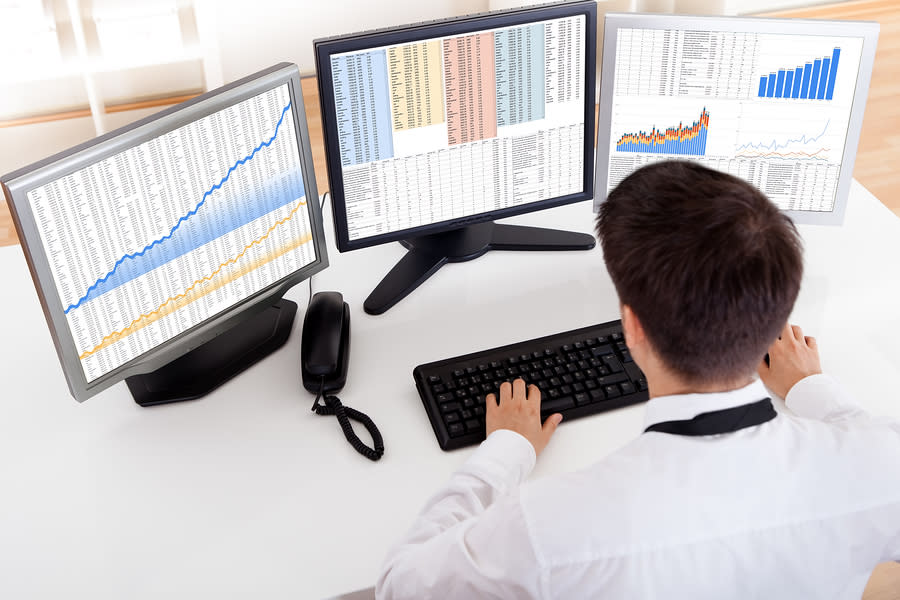How to Maximize Your Retirement Portfolio with These Top-Ranked Dividend Stocks

Strange but true: seniors fear death less than running out of money in retirement.
And retirees have good reason to be worried about making their assets last. People are living longer, so that money has to cover a longer period. Making matters worse, income generated using tried-and-true retirement planning approaches may not cover expenses these days. That means seniors must dip into principal to meet living expenses.
The tried-and-true retirement investing approach of yesterday doesn't work today.
In the past, investors going into retirement could invest in bonds and count on attractive yields to produce steady, reliable income streams to fund a predictable retirement. 10-year Treasury bond rates in the late 1990s hovered around 6.50%, whereas the current rate is much lower.
While this yield reduction may not seem drastic, it adds up: for a $1 million investment in 10-year Treasuries, the rate drop means a difference in yield of more than $1 million.
And lower bond yields aren't the only potential problem seniors are facing. Today's retirees aren't feeling as secure as they once did about Social Security, either. Benefit checks will still be coming for the foreseeable future, but based on current estimates, Social Security funds will run out of money in 2035.
So what's a retiree to do? You could cut your expenses to the bone, and take the risk that your Social Security checks don't shrink. Or you could find an alternative investment that provides a steady, higher-rate income stream to replace dwindling bond yields.
Invest in Dividend Stocks
As a replacement for low yielding Treasury bonds (and other bond options), we believe dividend-paying stocks from high quality companies offer low risk and stable, predictable income investors in retirement seek.
Look for stocks that have paid steady, increasing dividends for years (or decades), and have not cut their dividends even during recessions.
One approach to recognizing appropriate stocks is to look for companies with an average dividend yield of 3% and positive average annual dividend growth. Numerous stocks hike dividends over time, counterbalancing inflation risks.
Here are three dividend-paying stocks retirees should consider for their nest egg portfolio.
Plymouth Industrial (PLYM) is currently shelling out a dividend of $0.23 per share, with a dividend yield of 4.48%. This compares to the REIT and Equity Trust - Other industry's yield of 4.57% and the S&P 500's yield of 1.71%. The company's annualized dividend growth in the past year was 2.27%. Check Plymouth Industrial (PLYM) dividend history here>>>
Republic Bancorp (RBCAA) is paying out a dividend of $0.37 per share at the moment, with a dividend yield of 3.72% compared to the Banks - Southeast industry's yield of 2.54% and the S&P 500's yield. The annualized dividend growth of the company was 9.68% over the past year. Check Republic Bancorp (RBCAA) dividend history here>>>
Currently paying a dividend of $0.25 per share, Tanger Factory Outlet (SKT) has a dividend yield of 4.52%. This is compared to the REIT and Equity Trust - Retail industry's yield of 4.55% and the S&P 500's current yield. Annualized dividend growth for the company in the past year was 20.55%. Check Tanger Factory Outlet (SKT) dividend history here>>>
But aren't stocks generally more risky than bonds?
Yes, that's true. As a broad category, bonds carry less risk than stocks. However, the stocks we are talking about - dividend -paying stocks from high-quality companies - can generate income over time and also mitigate the overall volatility of your portfolio compared to the stock market as a whole.
Combating the impact of inflation is one advantage of owning these dividend-paying stocks. Here's why: many of these stable, high-quality companies increase their dividends over time, which translates to rising dividend income that offsets the effects of inflation.
Thinking about dividend-focused mutual funds or ETFs? Watch out for fees.
You may be thinking, "I like this dividend strategy, but instead of investing in individual stocks, I'm going to find a dividend-focused mutual fund or ETF." This approach can make sense, but be aware that some mutual funds and specialized ETFs carry high fees, which may reduce your dividend gains or income, and defeat the goal of this dividend investment approach. If you do wish to invest in a fund, do your research to find the best-quality dividend funds with the lowest fees.
Bottom Line
Whether you select high-quality, low-fee funds or stocks, seeking the steady income of dividend-paying equities can potentially offer you a path to a better and more stress-free retirement.
Want the latest recommendations from Zacks Investment Research? Today, you can download 7 Best Stocks for the Next 30 Days. Click to get this free report
Plymouth Industrial REIT (PLYM) : Free Stock Analysis Report
Tanger Factory Outlet Centers, Inc. (SKT) : Free Stock Analysis Report
Republic Bancorp, Inc. (RBCAA) : Free Stock Analysis Report

 Yahoo Finance
Yahoo Finance 